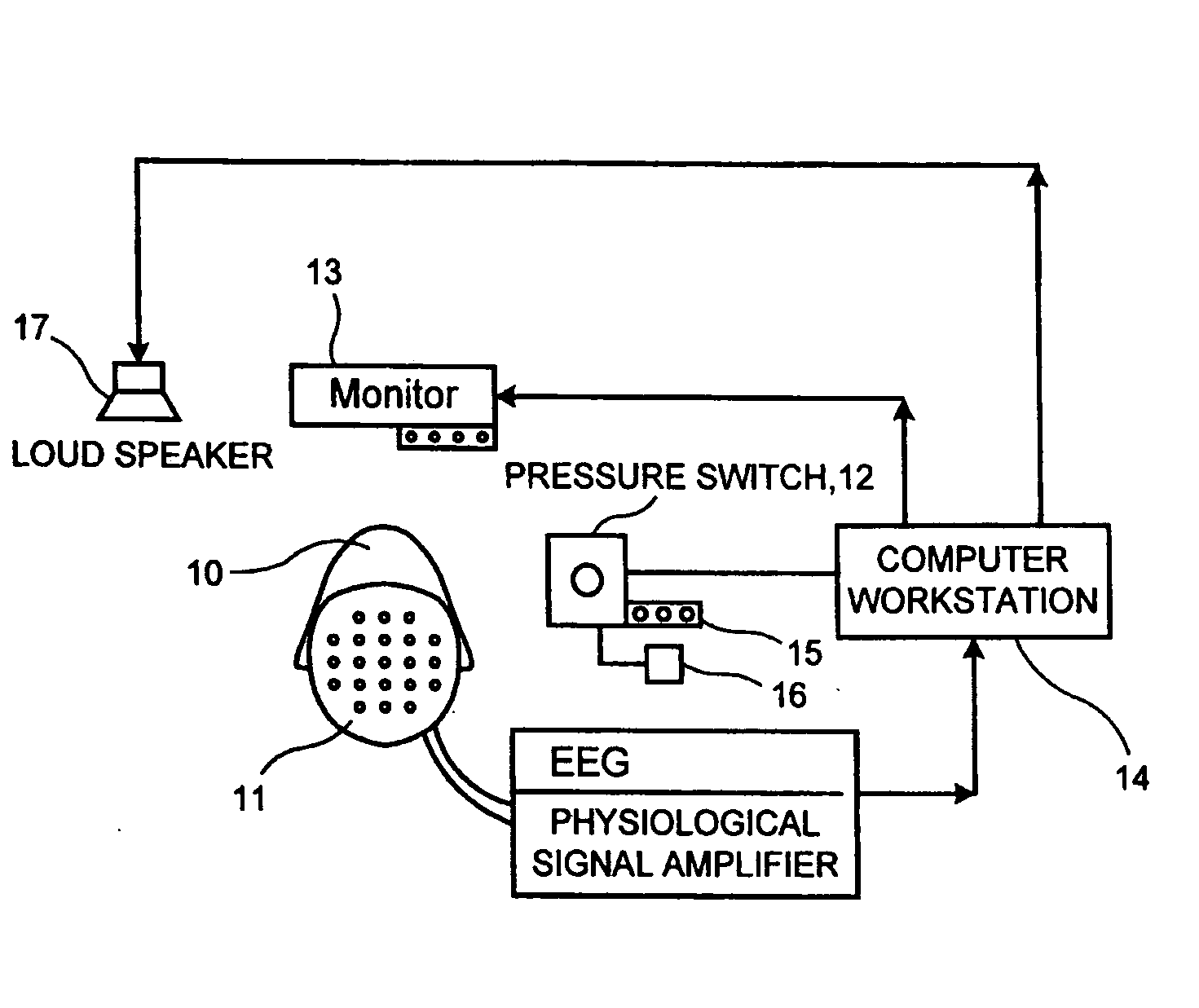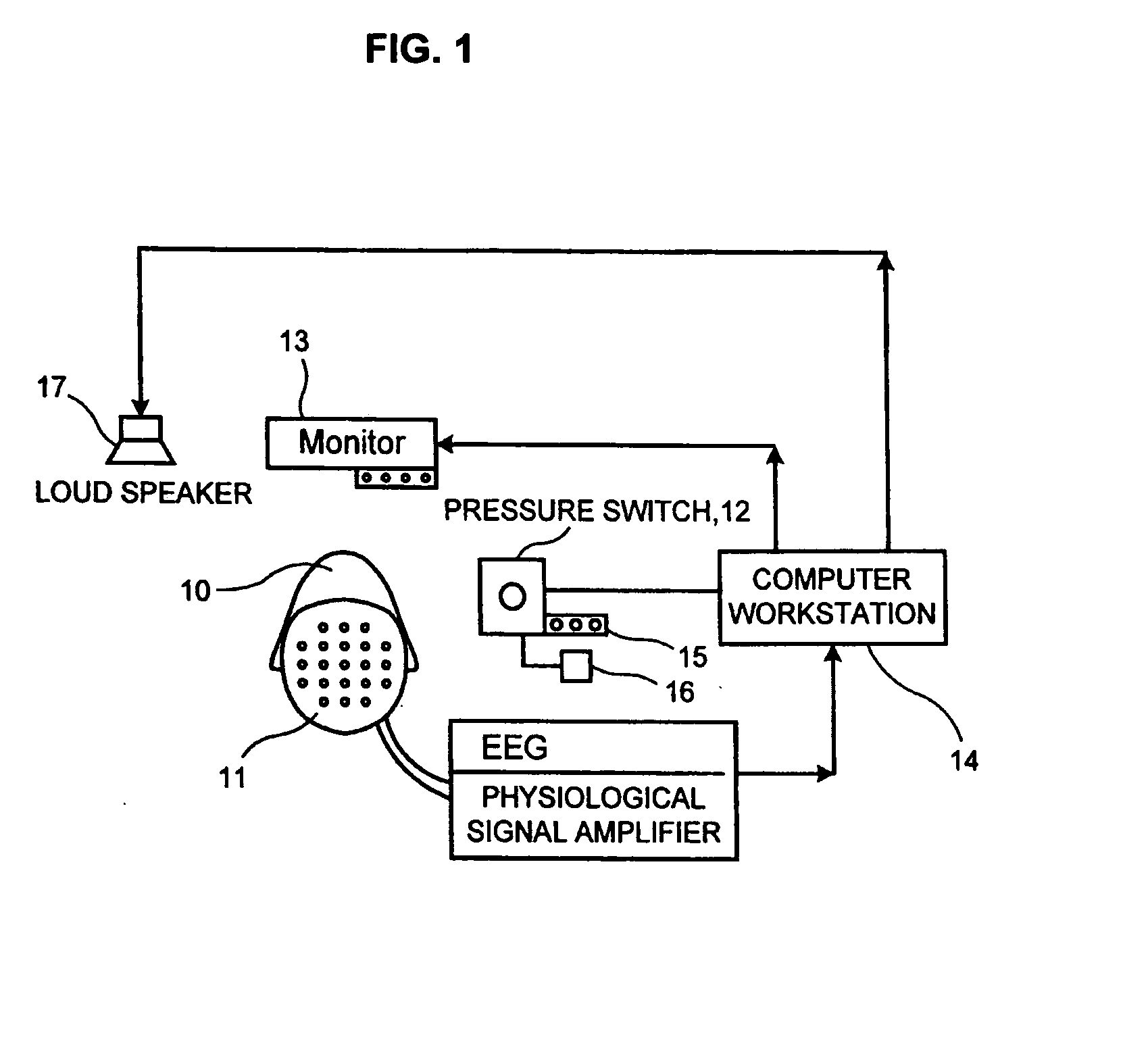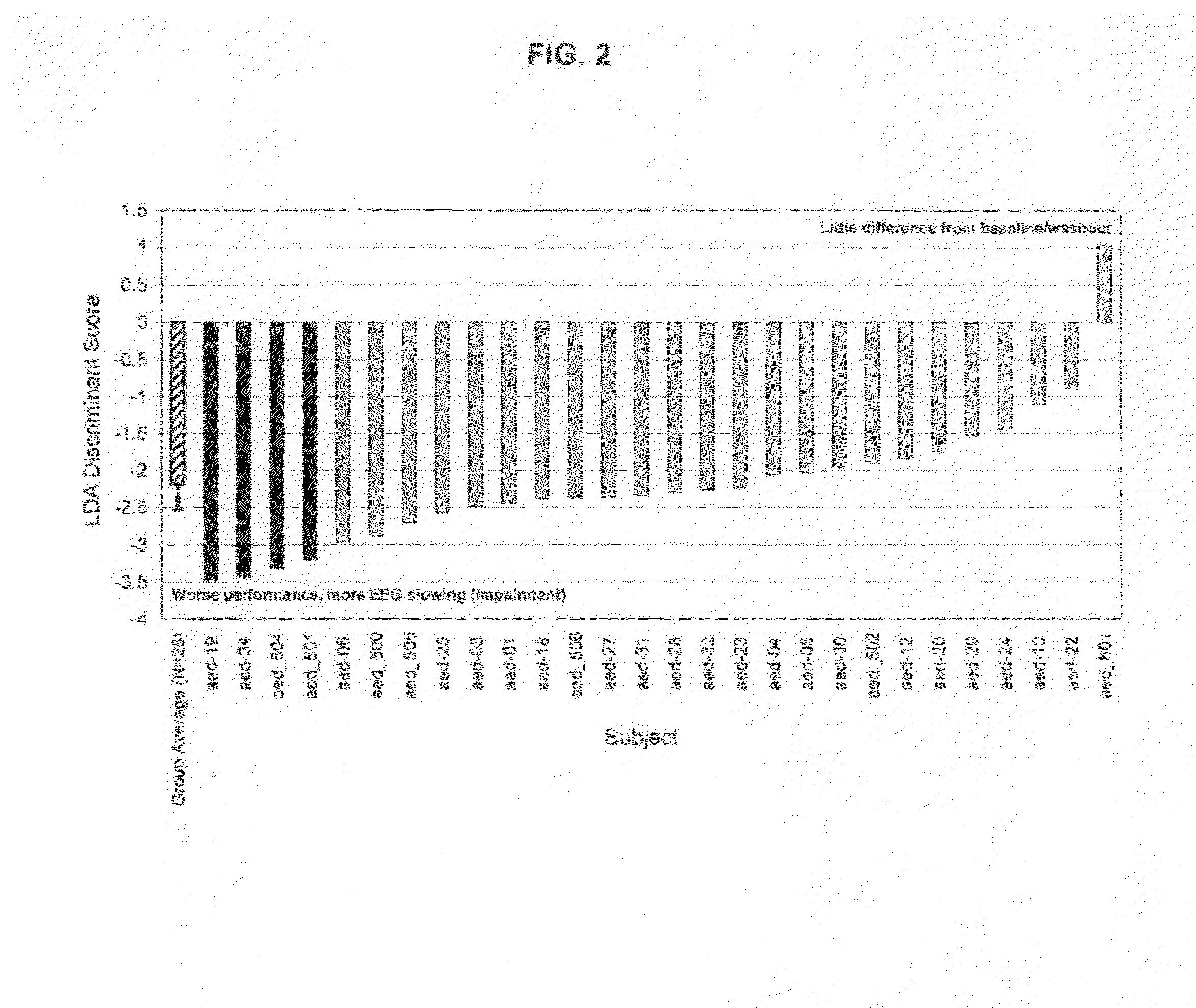Determination of treatment results prior to treatment or after few treatment events
a treatment outcome and treatment method technology, applied in the field of medical decision making, can solve the problems of rare if ever done, impractically large sample of patients, and function measures that can produce erroneous or misleading conclusions about individuals, so as to reduce confounding variables, predict and evaluate long-lasting changes in neurocognitive function, and improve the effect of delaying or improving symptoms of diseases or conditions
- Summary
- Abstract
- Description
- Claims
- Application Information
AI Technical Summary
Benefits of technology
Problems solved by technology
Method used
Image
Examples
example 1
Prediction of Drug Response
[0141]This example shows how the invention has been used to predict drug response prior to drug administration. Accordingly, from a non-drug baseline, the health care provider determines whether a subject will have a positive or an adverse neurocognitive response to the common anti-epileptic drugs. This study assessed the sensitivity of the present invention in evaluation of the neuropsychological and neurophysiological effects of the antiepileptic drug (AED) carbamazepine (CBZ).
[0142]One embodiment for use of the present invention is in the management of epilepsy (or other seizure disorders). Epilepsy is a common neurological condition that is characterized by recurrent unprovoked seizures. The seizures are transient signs and / or symptoms due to abnormal excessive or synchronous neuronal activity in the brain. It affects approximately 50 million people worldwide. Epilepsy is usually controlled, but not cured, with medication. At the present time the most ...
example 2
Prediction of Effective Drug Dose
[0178]The following experiment determined the optimal dose of the commonly prescribed psychostimulant drug methylphenidate for treating Attention Deficit Hyperactivity Disorder (ADHD) from test doses. The diagnosis of ADHD is defined in the DSM IV-TR (Diagnostic and Statistical Manual of Mental Disorders). The ADHD diagnosis identifies characteristics such as hyperactivity, forgetfulness, mood swings, poor impulse control, and distractibility, as symptoms of an unspecified underlying neurological pathology.
[0179]This study assessed the sensitivity of data obtained in accordance with the present invention in evaluating varying doses of methylphenidate (MPH, Ritalin™) in treating pediatric ADHD. The analysis described herein aimed at determining whether the SAM Exam could match the optimal dose of methylphenidate that was independently selected by a pediatric psychiatrist specialist who prescribed the drug in accordance with current methods in the art....
example 3
Prediction of Drug Response Prior to Administering a Drug
[0208]This example sets forth predictions from data prior to drug administration. Accordingly, from a non-drug baseline, the health care provider determines whether a subject will have a positive or an adverse neurocognitive response to the common anti-epileptic drug topiramate.
[0209]In Smith, Gevins, Meador, et al., 2006, the cognitive neurophysiological effects of topiramate were examined in a double-blind, randomized, crossover design. Principally, topiramate adversely affected working memory task performance and increased 2-6 Hz EEG power. In the present analysis, we predict subjects' neurocognitive response to topiramate from her or his non-drug baseline data. To this end, we first computed how much each subject's neurocognitive function was affected by taking topiramate, grouping them as “bad responders” and “OK responders.” Accordingly, an array of direct and indirect brain function measures that differed between “bad r...
PUM
 Login to View More
Login to View More Abstract
Description
Claims
Application Information
 Login to View More
Login to View More - R&D
- Intellectual Property
- Life Sciences
- Materials
- Tech Scout
- Unparalleled Data Quality
- Higher Quality Content
- 60% Fewer Hallucinations
Browse by: Latest US Patents, China's latest patents, Technical Efficacy Thesaurus, Application Domain, Technology Topic, Popular Technical Reports.
© 2025 PatSnap. All rights reserved.Legal|Privacy policy|Modern Slavery Act Transparency Statement|Sitemap|About US| Contact US: help@patsnap.com



